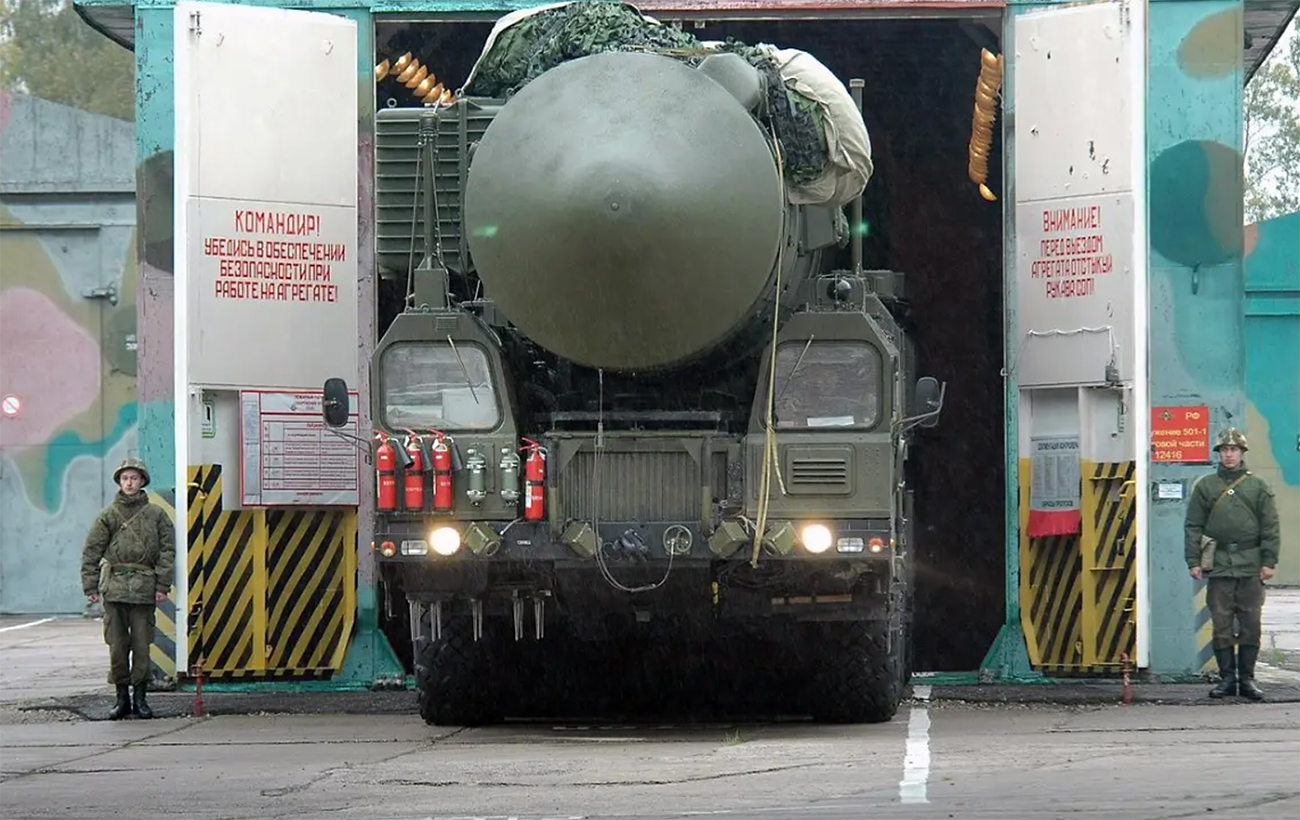RS-26 Rubezh: What Russia's new missile signals about its military strategy
 Photo: alleged RS-26 Rubezh missile complex (Russian media)
Photo: alleged RS-26 Rubezh missile complex (Russian media)
Amid warnings from the US Embassy about a potential "significant air attack" on Ukraine, speculation has emerged online about alleged Russian preparations to launch an experimental ballistic missile. Unconfirmed reports suggest this could involve the intercontinental RS-26 Rubezh missile.
Read the detailed information about the RS-26 Rubezh in RBC-Ukraine's material below.
Contents
- Rumors of alleged RS-26 Rubezh missile launch
- Detailed information about Russian RS-26 Rubezh missile
- Western criticism of RS-26 Rubezh and its current status
Rumors of alleged RS-26 Rubezh missile launch
Reports in Ukrainian Telegram channels suggest Russia may be preparing to launch an experimental ballistic missile. It could allegedly be the RS-26 Rubezh without a nuclear charge, although it can carry one.
It is also reported that if the RS-26 Rubezh is indeed being prepared for launch, the strike could come from the East, particularly from the Kapustin Yar missile range in the northeastern part of the Astrakhan region.
At the same time, the high risk of other missile deployments still exists. This threat may persist not only today but also in the coming days. Ukrainians are urged to take the ballistic threat seriously and respond promptly to air raid alerts.
The source of the information remains unspecified. However, it is likely that the first warning came from the Strategic Control channel, which specializes in monitoring radio frequencies and tracking Russian strategic and military transport aviation.
According to their data, the potential use of the RS-26 Rubezh missile might be linked to Russia preparing a response to Ukrainian strikes with ATACMS ballistic missiles. Notably, reports emerged recently about Ukraine using these long-range Western missiles to target a major military arsenal near Karachev in the Bryansk region.
"Positioning the RS-26 in this area (the Astrakhan region – ed.) allows for potential launches against Ukraine from the eastern direction, bypassing most of the missile defense systems deployed closer to northern borders. This also reduces the risk of interception in the early phases of flight," OSINT analysts believe.
According to the analysts, reports of a possible Rubezh missile strike could simply be a psychological pressure tactic by the Kremlin to showcase strength to Ukraine's Western partners. Interestingly, the channel currently has no such message.
 Photo: alleged RS-26 Rubizh complex (Russian media)
Photo: alleged RS-26 Rubizh complex (Russian media)
At the same time, the monitor channel reports the possibility of a ballistic missile strike from the Astrakhan region. "This might be linked to the authorization for using ATACMS missiles," the channel suggests.
Concerns have been heightened by news of several embassy closures in Kyiv. The US Embassy stated that it received serious information about preparations for an air attack on Ukraine on November 20. Embassy staff and American citizens received advice to stay in shelters in case of air raid alerts. Following this, the embassies of Spain, Italy, and Greece also suspended operations.
Ukrainian media Suspilne, citing sources, reported that the warning is not a response to heightened nuclear rhetoric from Russia but is related to an increased threat of a combined missile and drone attack. RBC-Ukraine reached out to military and security agencies for comments, but no information is currently available.
Detailed information about Russian RS-26 Rubezh missile
The RS-26 Rubezh is a Russian mobile ground-based strategic missile system equipped with an intercontinental ballistic missile. It builds on the design of the Yars project (RS-24 Yars) with upgraded maneuverable warheads designed to penetrate missile defense systems. The Yars project, in turn, is a modification of the Topol-M missile complex.
The missile can carry a thermonuclear warhead and can also be used with the hypersonic Avangard glide vehicle. Read more about it in RBC-Ukraine's material.
The first successful test of the Rubezh missile took place in May 2012. Launched from the Plesetsk Cosmodrome, the missile traveled 5,800 km within minutes and struck its target at the Kura test range. Further tests occurred at the Kapustin Yar and Sary-Shagan missile ranges.
Initially, the missile was expected to enter service in 2015, with deployment planned for 2017. However, in 2018, it was announced that the RS-26 Rubezh mobile missile system had been excluded from Russia's armament program through 2027.
Specific technical details remain unknown, but public sources suggest the following estimates:
- launch weight: 40–50 tons;
- range: up to 6,000 km;
- warhead: four separate units with a total capacity of 1.2 megatons.
Notably, the distance from the Kapustin Yar testing missile range to Ukraine's frontlines is less than 600 km.
Western criticism of RS-26 Rubezh and its current status
Western military observers have criticized the RS-26 Rubezh. The reason is the violation of the 1987 Intermediate-Range Nuclear Forces (INF) Treaty between the USA and the USSR (later Russia).
In 2014, Moscow was accused of testing medium-range missiles that breached the treaty. Then, in 2017, US President Donald Trump announced plans to withdraw from the agreement, with Congress allocating funds for the development of American missiles. In response, Russia accused the US of deploying launch systems capable of firing Tomahawk missiles. Negotiations collapsed, and the treaty was formally terminated in 2019.
Tests revealed that the Rubezh missile, with a reduced payload or none, could exceed the INF Treaty's range limit of 5,500 km. However, further trials of the missile involved significantly shorter distances.
In 2024, in the Foreign Policy column, Jeffrey Lewis, Director of the East Asia Nonproliferation Program at the Middlebury Institute of International Studies at Monterey, stated that the Rubezh missile is intended to deter Western forces from assisting NATO's eastern members bordering Russia.
The current development status of the missile remains unclear, according to analysts at the Ukrainian specialized resource Defense Express. However, in July 2024, the Kremlin threatened to resume production of intermediate- and short-range missiles. Therefore, the probability that Russia undertook the implementation of this decision is relatively high.
Moreover, the RS-26 is not an entirely new missile but a variant of the well-known Topol system. Analysts believe the RS-26 missile is based on two stages of the Topol-M missile. A similar approach was previously applied to the RSD-10 Pioneer, which used stages from the Temp-2S missile. Given the RS-26's medium-range classification, Moscow seems unlikely to deviate from this established pattern.
The Moscow Institute of Thermal Technology, responsible for the other aforementioned missiles, is developing the missile. The manufacturer is the Votkinsk Plant, which also produces ballistic Iskander missiles.
As a result, analysts at Defense Express concluded that Russia possesses the necessary resources to quickly resume RS-26 Rubezh production, leveraging existing technological lines, supply chains, and established designs.
Sources: Information from Ukrainian Telegram channels, open-source data, and Ukrainian specialized resource Defense Express materials.

